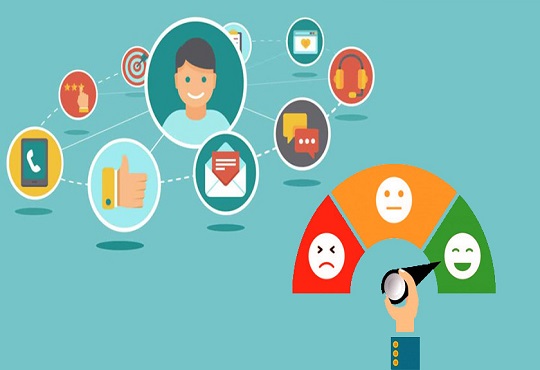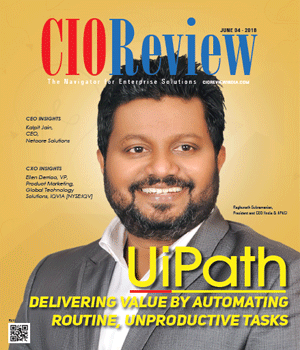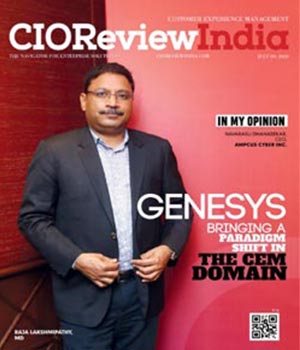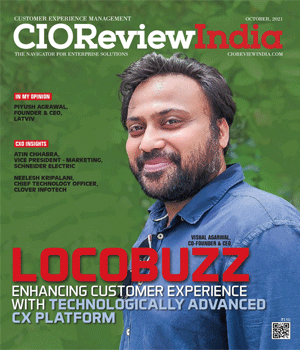
Harnessing the Power of Data as a Service to Enhance Customer Experience
Janifha Evangeline | Sunday, 09 July 2023, 14:29 IST

Customers would pay more for brands that provide a wonderful experience, according to 86% of consumers. Within three years of investing in CX, companies with a $1 billion USD yearly revenue can generate an additional $700 million USD. Therefore, there is no question that improved CX benefits the bottom line.
This change in customer opinion has been noted. CX is currently listed as a competitive differentiator by 81% of organisations. However, businesses are being cautious this year. According to the International Monetary Fund, the likelihood of a recession is lower than previously thought. But there is still a chance. Therefore, the main goal of CX strategies is to keep current consumers.
Data is the secret to this tactic. Additionally, businesses have a tonne of data. Particularly in the banking, fintech, and tourism industries is this true. Their operation depends on data on demographics, preferences, and transactions.
It's an entirely new game to try to make sense of this data. Businesses in these industries face four unique difficulties and these include:
Data is not accessible to all stakeholders: When it comes to gathering and exploiting client data, 71% of banks fall short. Only 8% of banks can use predictive insights to decide what to do and how to do it. Even tech-savvy fintech companies have trouble competing in this market. Data concerns are cited by 81% of fintech companies as their largest global challenge.
Available data is of poor quality: Enterprises lose 15% to 25% of their income due to inaccurate data. The worldwide banking industry loses more than $400 billion a year due to "dirty data".
External data is not used: According to 92% of analytics experts, businesses need to employ more external data sources. Businesses who make advantage of external data reported 37% more revenue per employee.
No single view of customer: In order to exploit structured customer data in AI-driven efforts, only 28% of banks can currently do so. The customer's lifestyle and financial preferences are distorted in this perception.
How Daas addresses these challenges
Enterprises may gather, manage, and analyse data with the use of DaaS. Through the cloud, it makes information accessible across departments. It offers convenient, inexpensive access to data-centric insights. There is a lot of strategy, science, and organising required to make datasets understandable and usable.
Algorithm setup is more complicated than that. Datasets must be analysed by humans to reveal insights. DaaS is using a scientific method. This information can be used by businesses to plan their CX strategy.
The most successful DaaS capabilities employ a multifaceted strategy. Let's examine three crucial elements.
Data Lakehouse
In the words of author DK Moran, “You can have data without information, but you cannot have information without data.” According to a report by Accenture, 80% of organisations have unstructured and unavailable data on hand. There would be no insights without this data to analyse.
A DaaS supplier makes sure that the crucial initial stage of data collection is carried out correctly. Businesses can save time and effort on administration by choosing DaaS. A cloud-based strategy is used by the provider to build data lakehouses. No silos, just all the information in one location.
This data management architecture makes use of scalability, affordability, and flexibility. Through this redundancy and data transportation are decreased, data for analytical tools are directly accessible to stakeholders, and it is an affordable option for data storage.
Data Cleaning
DaaS involves more than just stocking the data lakehouse. It's time to do some spring cleaning after your data is available. Before analysis, the data must make sense. Businesses frequently use ineffective data collection techniques that produce filthy data. This may lead to risks associated with transactions, mistakes or fraudulent transactions, misguided beliefs regarding data-driven insights and decreased productivity and speed
While manually resolving this is a labour- and time-intensive task DaaS comes to the rescue by deleting erroneous, corrupt, and duplicate data with the help of AI models and algorithms. This guarantees access to high-quality data for businesses. When analysed, this can produce accurate models and visualisations for company strategy planning.
Maintaining efficacy also involves routine cleaning. Then, businesses can satisfy the following five criteria for high-quality data such as validity, accuracy, completeness, consistency and uniformity In addition, a competent DaaS partner can provide improved data collection techniques to avoid or reduce the need for data cleansing in the future.
Data Enrichment
After establishing a data-based approach, it's time to concentrate on the consumer profile. Banks can provide the best categories and merchants for each persona using internal data and AI/ML models. Beyond this first-party data, DaaS providers have further options. They also provide access to outside data so that a more complete picture of each consumer may be built. The advantage is - Among them are better customer experience, consumer targeting, and understanding of customer behaviour.
For instance, the AI-driven Maya.ai platform from Crayon Data offers DaaS features like the exclusive TasteGraphTM. This enables businesses to determine the affinity between any client and merchant, even if they have never done business together. Each persona receives a combined score using external data (7.4 million merchants worldwide).
Enterprises must collaborate with numerous partners in order to improve the consumer experience. In both B2C and B2B industries, data analytics delivers value as an additional layer of insight. However, is DaaS worthwhile? Or will it be a passing fad, a misguided investment made by businesses, or just underutilised?
According to Gartner's Hype Cycle, DaaS will hit its productivity plateau in 2023. That is, adoption will experience rapid expansion. It is conceptually identical to software-as-a-service (SaaS). The aforementioned capabilities of a DaaS partner can increase personalization's breadth, convenience, and usefulness. Revenue is increased when data is used to develop engaging customer experiences.
CIO Viewpoint
How The Sale of Counterfeit Products Can be...
By Khalid Wani, Senior Director, Sales, India- Western Digital
How Customer Experience Is Driving Supply Chain...
By Joseph Lim, Sales Director, APAC, BluJay Solutions
Connect to Customers - Customer Relationship...
By Satrajit Bhattacharya, IT Head, Future Group India
CXO Insights
How Omni-channel Customer Engagement Drives...
By Ankit Tandon, Chief Operating Officer, OYO Townhouse
By In conversation with CIOReview, Krishna Somayaji, MD, Somayaji Group talks about the group of companies
Which Segment of Analytics Space Can Drive the...










